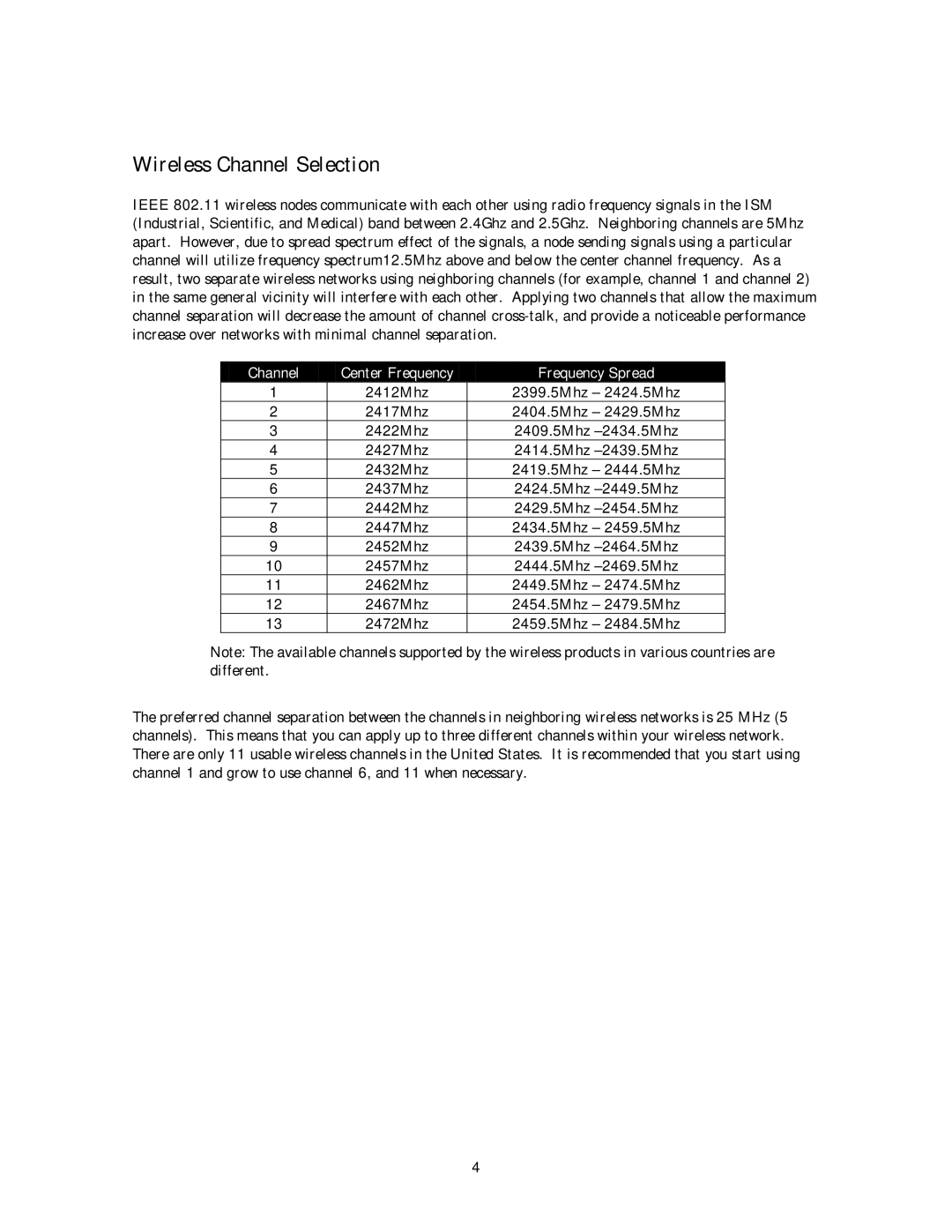Wireless Channel Selection
IEEE 802.11 wireless nodes communicate with each other using radio frequency signals in the ISM (Industrial, Scientific, and Medical) band between 2.4Ghz and 2.5Ghz. Neighboring channels are 5Mhz apart. However, due to spread spectrum effect of the signals, a node sending signals using a particular channel will utilize frequency spectrum12.5Mhz above and below the center channel frequency. As a result, two separate wireless networks using neighboring channels (for example, channel 1 and channel 2) in the same general vicinity will interfere with each other. Applying two channels that allow the maximum channel separation will decrease the amount of channel
Channel | Center Frequency | Frequency Spread |
1 | 2412Mhz | 2399.5Mhz – 2424.5Mhz |
2 | 2417Mhz | 2404.5Mhz – 2429.5Mhz |
3 | 2422Mhz | 2409.5Mhz |
4 | 2427Mhz | 2414.5Mhz |
5 | 2432Mhz | 2419.5Mhz – 2444.5Mhz |
6 | 2437Mhz | 2424.5Mhz |
7 | 2442Mhz | 2429.5Mhz |
8 | 2447Mhz | 2434.5Mhz – 2459.5Mhz |
9 | 2452Mhz | 2439.5Mhz |
10 | 2457Mhz | 2444.5Mhz |
11 | 2462Mhz | 2449.5Mhz – 2474.5Mhz |
12 | 2467Mhz | 2454.5Mhz – 2479.5Mhz |
13 | 2472Mhz | 2459.5Mhz – 2484.5Mhz |
Note: The available channels supported by the wireless products in various countries are different.
The preferred channel separation between the channels in neighboring wireless networks is 25 MHz (5 channels). This means that you can apply up to three different channels within your wireless network. There are only 11 usable wireless channels in the United States. It is recommended that you start using channel 1 and grow to use channel 6, and 11 when necessary.
4
